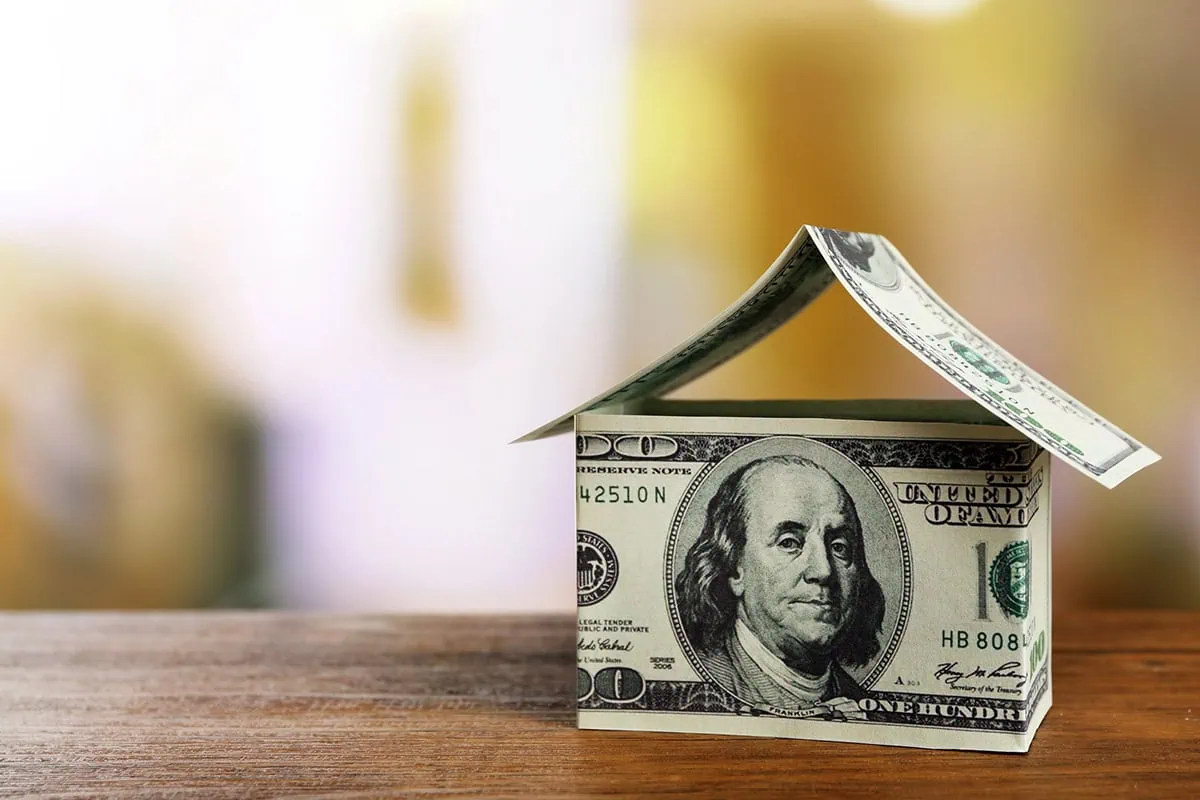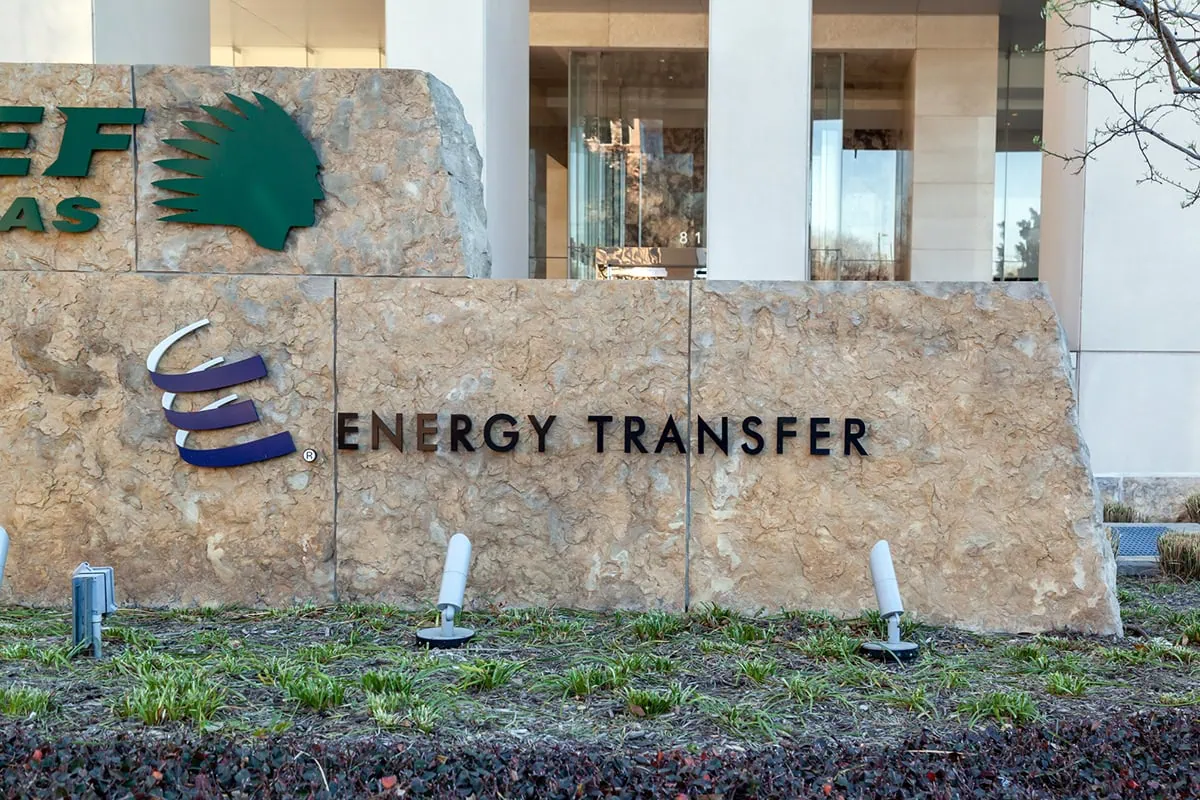High-yield dividend stocks are difficult to resist. They can generate outsized amounts of income, which makes them the stuff of dreams for retirees whose budgets are fixed—as well as for any investors who simply want a little performance ballast during periods of rough stock-price returns.
But you can’t just put a bull’s-eye on the biggest yields you see and call it a day.
With high reward comes high risk. A stock offering several times more yield than the market average might very well be the undiscovered can’t-miss stock pick of the year … or it could be flashing a signal that many investors have passed it up for a reason. Yes, a very high yield can help make up for some underperformance in the stock price, but that’s only true as long as the dividend keeps getting paid. Some high-dividend stocks have unsustainable distributions that are just one earnings miss or economic downturn away from being reduced or suspended.
None of this is to say you should run screaming from high-yield stocks. Just don’t buy them on yield alone. Quality matters.
Let’s look at a group of high-yield dividend stocks that are showing more signs of fundamental quality than most. Not only do they deliver much sweeter yields than your average stock, but they also have the confidence of Wall Street’s analyst community.
Disclaimer: This article does not constitute individualized investment advice. These securities appear for your consideration and not as personalized investment recommendations. Act at your own discretion.
Editor’s Note: Tabular data presented in this article is up-to-date as of Aug. 21, 2025.
Featured Financial Products
Table of Contents
Dividend Yields (And Dividend Safety)

Dividend yield is a simple calculation—annual dividend / price x 100—that can mean a world of difference for investors, especially those reliant on income.
Consider this. Let’s say you have a $1 million nest egg heading into retirement. If your portfolio yields 3%, you’ll collect $30,000 in dividend and interest income each year. If it yields 6%, though, you’ll collect $60,000—a dramatically higher number that would change your retirement calculus.
But dividend yields can be deceiving. You see, a company can get a very high annual dividend yield in two very different ways: the dividend growing very rapidly, or the share price falling very quickly.
For example, Alpha Corp., which trades for $100 per share, pays a 75¢-per-share quarterly dividend, or $3 across the whole year. It yields 3.0%. In a month, however, it yields 6.0%. Here are two ways that could have happened:
1. Alpha Corp. doubled its dividend to $1.50 per share quarterly, good for a $6-per-share annual dividend. The share price stays the same. ($6 / $100 x 100 = 6.0%)
2. Alpha Corp. kept its dividend at 75¢ quarterly ($3 annually), but its share price plunged in half to $50 per share. ($3 / $50 x 100 = 6.0%)
In which scenario do you think the 6% yield is safer?
That’s why you should always be mindful of dividend safety, but especially when it comes to high-yield dividend stocks. That’s because oftentimes, the dividend is a more significant contributor to returns than price, so any danger to the dividend could undermine your investment thesis.
Thus, it’s vital that any high-dividend stocks you buy are financially stable and can generate substantial profits and cash, which is how the dividend gets paid. Among other things, you’ll want to look at payout ratio, which determines what percentage of a company’s profits, distributable cash flow, and other financial metrics (depending on the type of stock) are being used to finance the dividend. Generally speaking, the lower the payout ratio, the more sustainable the payout.
Falling Prices or Rapid Dividend Payout Growth?

Taking this math a step further, you learn that a company can suddenly feature a very high dividend yield through one of two very different ways: the share price falling very quickly, or the dividend growing very rapidly.
Alpha Corp., which trades for $40 per share, pays a 25-cent quarterly dividend that yields 2.5%. In a month, it yields 5.0%. Here are two ways that could have happened.
— Alpha Corp. doubled its dividend to 50 cents per share, for a full $2 per share across the year. The share price stays the same. ($2 / $40 x 100 = 5.0%)
— Alpha Corp. kept its dividend the same, but its share price plunged in half to $20 per share. ($1 / $20 x 100 = 5.0%)
Clearly, that 5% yield appears to be much safer and reliable in one scenario than the other.
How Does Dividend Growth Work?

Of course, yield is normally a function of what we know now—not how a business might change in the future. Many companies exhibit dividend growth over time.
There’s no universal rule about how companies might raise or reduce their payments, but generally dividend stocks tie these profit sharing plans to earnings growth.
In other words, if a company is making more profits, then they have more cash to spread around to shareholders. And if they hit a serious snag, there’s a chance dividends could be cut or eliminated to shore up finances.
What Is Yield on Cost?

When you look up a stock’s information, the dividend yield listed is based on the most recent dividend and the current stock price.
That yield is often actually different than the one current shareholders enjoy. That yield is called “yield on cost,” which is the payout based on what you paid, at the moment you invested.
Let’s say you buy a stock at $100, and it pays $1 per share. It yields 1.0% when you buy it ($1 / $100 x 100 = 1.0%).
In a year, that stock has doubled to $200 per share, and it also doubled its dividend to $2 per share. If you look up its information, its dividend is still 1.0% ($2 / $200 x 100 = 1.0%).
That’s not your yield on cost, however. You’re still receiving that higher dividend of $2 per share. But your cost basis is still the original $100 you bought the share at. So now, your yield on cost has doubled, to 2.0% ($2 / $100 * 100 = 2.0%)!
Related: 5 Best Fidelity Retirement Funds [Low-Cost + Long-Term]
7 Highly Rated High-Yield Dividend Stocks

Today, I’m going to look at several high-dividend stocks yielding at least 5%—a level that’s more than four times what the S&P 500 offers currently, and that’s well above most traditional high-dividend ETFs. Actually, several of these stocks yield much more than 5% … resulting in an average dividend yield of 8.7% across this list!
Every stock on this list also has a favorable view from Wall Street’s analyst community. The consensus analyst rating, courtesy of S&P Global Market Intelligence, is the average of all known analyst ratings of the stock, boiled down to a numerical system where …
— Less than 1.5 = Strong Buy
— 1.5-2.5 = Buy
— 2.5-3.5 = Hold
— 3.5-4.5 = Sell
— More than 4.5 = Strong Sell
In short, the lower the number, the better the overall consensus view on the stock. In the case of this list, I’ve included only stocks that have received a 2 or lower—in other words, clear-cut Buys in the analysts’ eyes.
Importantly: These are the best dividend stocks among companies that pay pretty high yields, but that doesn’t make any pick here a no-brainer slam dunk. They all have a blemish or two—whether it’s significant stock weakness of late, interest-rate risk, tight dividend coverage, or something else—but to the pros, at least, their high yields, relative value, and/or growth potential make the risk worth taking. So if you’re going to jump into high-yield investing, just make sure you do so with your eyes wide open.
The equities here are listed in reverse order of their consensus analyst rating, starting with the worst-rated stock and ending with the best-rated stock.
Do you want to get serious about saving and planning for retirement? Sign up for Retire With Riley, Young and the Invested’s free retirement planning newsletter.
7. Brookfield Infrastructure Partners LP

— Industry: Utilities and infrastructure
— Market capitalization: $14.0 billion
— Distribution yield: 5.7%*
— Consensus analyst rating: 1.73 (Buy)
Brookfield Infrastructure Partners LP (BIP) is a wide-ranging conglomerate of infrastructure spread across four continents. Its primary divisions include:
— Utilities: 16,200 kilometers of natural gas pipelines, 71,600 kilometers of electricity transmission lines, 8.4 million electricity and nat-gas connections, and more
— Transport: 36,300 kilometers of rail, 3,200 kilometers of toll roads, 10 terminals, and more
— Midstream: 21,000 kilometers of gathering, transmission, and transportation pipelines, 570 billion cubic feet (bcf) of natural gas storage and 5.7 bcf/day of natural-gas liquids (NGL) processing capacity
— Data: 163,100-plus telecom towers, 22,000 kilometers of fiber optic cable, 140 data centers, 2 chipmaking foundries, and more
Related: The 7 Best Closed-End Funds (CEFs)
Infrastructure companies are tightly tethered to interest rates, which determines their cost of debt. Unsurprisingly, then, BIP has been whipped around over the past few years as the Federal Reserve has raised and then cut its target benchmark rate. But analysts remain overwhelmingly positive on the stock going forward—right now, eight pros say it’s a Buy, versus three Holds and no Sells.
“In our view, BIP continues to offer an asymmetric risk/reward for investors,” says BMO Capital Markets Industrials Analyst Devin Dodge, who calls BIP a “preferred idea” and rates units at Outperform. “The portfolio companies are performing well and have limited direct exposure to tariff-related risks, monetizations at attractive valuations continue to emerge despite the macro uncertainties, and there is a strong pipeline of opportunities to redeploy the capital.”
Another reason for optimism among income investors: The company raised its payout by 6% in February 2025, to 43¢ per unit—good for a yield north of 5% at current prices. That puts its payout ratio around 67%, which is within its long-term target range.
Related: 15 Best Investing Research & Stock Analysis Websites
You’ll probably notice that I’ve been referring to “units.” That’s because BIP is a master limited partnership (MLP), which trades like a stock but is internally organized differently. It also uses a few different terms. For instance, shares are “units,” and it pays a dividend-esque “distribution” that can be something of a hassle from a taxation standpoint, especially for novices. However, Brookfield is a rare bird in that it offers a way around this: Brookfield Infrastructure Corporation (BIPC) shares, which pay the qualified dividends you’re used to from normal stocks.
* Distribution yield is calculated by annualizing the most recent distribution and dividing by unit price. Distributions are like dividends, but they are treated as tax-deferred returns of capital and require different tax paperwork.
Featured Financial Products
6. Dynex Capital

— Industry: Mortgage REIT
— Market capitalization: $1.6 billion
— Dividend yield: 16.4%
— Consensus analyst rating: 1.71 (Buy)
Most real estate investment trusts (REITs) that you read about tend to be “equity REITs,” which deal in physical real estate. Specifically, they own (and sometimes operate or manage) properties, whether that’s apartments, office buildings, hotels, warehouses, you name it.
But “mortgage REITs” deal in paper real estate. That typically takes the form of residential and/or commercial mortgages, as well as mortgage-backed securities (MBSes). An mREIT will borrow money at short-term interest rates. It will take that money and buy mortgages, MBSes, and/or other mortgage-related securities. It will then earn income from the interest generated by these products—and use much of this profit to pay dividends to its shareholders. In fact, mREITs tend to have higher dividend yields than their traditional real estate cousins.
Related: 7 Best High-Dividend ETFs for Income-Minded Investors
Dynex Capital (DX) is the longest-tenured mREIT, founded in 1987. And it’s explicitly an “agency” mREIT, which means it deals in mortgages and MBSes from government agencies such as Freddie Mac and Fannie Mae. In fact, its portfolio is 97% agency residential MBSes (RMBSes), and most of the remainder is agency commercial MBSes (CMBSes).
Keefe, Bruyette and Woods, which rates Dynex at Outperform, is broadly bullish on agency MBS sectors. “Agency MBS spreads remain close to historical wides, which should support low- to mid-teen returns on incremental investments,” KBW analysts say. “We believe that companies are well-positioned to capitalize on the attractive investing environment given the low leverage across the sector. Additionally, given the uncertainty in the equity and debt markets, we think double-digit returns from the agency MBS REITs appear compelling and could outperform the financial sector.”
KBW is just one of a handful of analyst outfits that cover Dynex, which is typical for the mREIT industry. Still, among these few pros, the bulls are the majority—DX has five Buys versus two Holds and no Sells.
Dynex pays a monthly dividend, and a generous one at that—more than 16% as I write this. However, mortgage REITs tend to have shakier dividend histories than traditional stocks and even equity REITs, and DX is no exception. Its dividend was hacked away by 85% between 2012 and 2020, to 13¢ per share monthly. But things are looking up recently: The company finally raised its dividend in mid-2024, to 15¢, then again in Feburary 2025, to 17¢.
Still, that payout history is an important reminder that double-digit yields are hardly risk-free.
Related: 7 Low- and Minimum-Volatility ETFs for Peace of Mind
5. Sixth Street Specialty Lending

— Industry: BDC
— Market capitalization: $2.3 billion
— Dividend yield: 8.2%*
— Consensus analyst rating: 1.64 (Buy)
Sixth Street Specialty Lending (TSLX) belongs to another high-yielding acronym industry: business development companies (BDCs).
Fun fact: Congress is actually responsible for the creation of real estate investment trusts, which were brought to life in 1960 with a mandate to return at least 90% of their taxable income back to shareholders as dividends (in exchange for favorable tax treatment). Well, 20 years later, in the hopes of spurring investment in smaller businesses, Congress went back to the same playbook and created BDCs—with the same dividend mandate.
Sixth Street Specialty Lending provides financing to middle-market companies primarily through senior secured loans, though also occasionally mezzanine loans, unsecured loans, bonds, and equity. Importantly, 97% of the company’s debt investments are floating-rate in nature, meaning that their rates shift alongside benchmark interest rates.
Related: 7 Best Schwab ETFs to Buy [Build Your Core for Cheap]
TSLX is somewhat conservative compared to other BDCs; historically, it has held only 5% to 15% of its investments (by fair value) in cyclical companies. Currently, it has 115 portfolio companies across internet services, retail, consumer products, business services, and about a dozen other industries. Moreover, no holding makes up more than 3% of the portfolio by fair value.
“TSLX remains a leader in the BDC space with a strong underwriting track record (as demonstrated by low non-accruals), an opportunistic approach to capital deployment, and an industry-leading ROE,” says JPMorgan Analyst Melissa Wedel, who rates the stock at Overweight (equivalent of Buy). She’s among 10 analysts that rate the stock a Buy, versus just one Hold and zero Sells.
“Because TSLX is a relatively small vehicle managed under the large Sixth Street Partners platform ($70+ billion), it can be nimble, flexible, and creative in providing compelling credit solutions to borrowers, but also has the size, scale, and resources of a large credit platform. This has contributed to TSLX’s originating very attractive investments and generating one of the highest returns in the BDC sector,” adds Keefe, Bruyette & Woods, which rates shares at Outperform. “We view TSLX’s management team as one of the best in the sector, which has been proven by their ability to generate significant value and very high returns through many different economic environments.”
* Sixth Street Specialty Lending’s yield includes three 5¢ special dividends to be paid in March, June, and September 2025. The yield on TSLX’s regular quarterly dividend is 7.8% as of this writing.
4. Rithm Capital

— Industry: Mortgage REIT and alternative asset management
— Market capitalization: $6.5 billion
— Dividend yield: 8.2%
— Consensus analyst rating: 1.36 (Strong Buy)
Rithm Capital (RITM) is technically a mortgage REIT, though it looks much different than Dynex. This “hybrid” mREIT has numerous businesses, including alternative asset management. RITM invests in residential mortgages loans, consumer loans, single-family rentals, mortgage servicing rights (MSRs), residential transitional loans, secured lending and structured products, and commercial real estate.
It’s an utterly transformed company from just a few years ago. Per Argus Research:
Related: 12 Best Investment Opportunities for Accredited Investors
“The company has transformed its business model since the financing crisis in late March 2020. It continues to grow its mortgage servicing business while also taking advantage of new debt-related investment opportunities. RITM has acquired a 50% stake in GreenBarn Investment Group, a commercial real estate equity and debt investment management firm, purchased $1.4 billion of Marcus consumer loans from Goldman Sachs for $145 million, and completed the acquisition of Computershare Mortgage Services Inc. and certain affiliated companies, including Specialized Loan Servicing LLC (SLS) for approximately $720 million. Its acquisition of $33 billion alternative asset manager Sculptor Capital Management was completed in 4Q23.”
The pros love the new-look RITM. Currently, every one of the 11 analysts covering the stock call it a Buy.
“The outlook for 2025 and 2026 includes a possible partial spin-off of Newrez, the in-process precedent of Rocket’s (RKT, Not Rated) proposed acquisition of Mr. Cooper (COOP, Not Rated), and most recently Guild Holdings (GHLD, Not Rated) take-private offer from Bayview Asset Management (Private), which should support a higher multiple and could start the process of a C-corp reorganization,” says B. Riley Analyst Randy Binner, who recently reiterated his Buy rating. “We believe a higher valuation for the RITM complex will come into focus for investors.”
The firm is also bullish in Rithm’s ability to afford its 8%-plus payout, which puts RITM among the highest-paying dividend stocks on our list.
Related: The 9 Best Dividend Stocks for Beginners
3. Energy Transfer LP

— Industry: Energy midstream
— Market capitalization: $59.9 billion
— Distribution yield: 7.6%
— Consensus analyst rating: 1.35 (Strong Buy)
Another high-yielding energy infrastructure play is Energy Transfer LP (ET), one of the continent’s largest midstream energy firms. The Dallas-based MLP’s assets include more than 130,000 miles of energy pipelines and other infrastructure across 44 states, responsible for transporting and storing crude oil, natural gas, NGLs, and refined products. Its additional assets include Lake Charles LNG Company, a 21% stake in Sunoco LP (SUN), and a 39% stake in USA Compression Partners LP (USAC).
Related: 5 Best Vanguard Dividend Funds [Low-Cost Income]
Energy Transfer has walloped the broader energy-infrastructure industry since the COVID bear-market bottom, delivering a total return of about 490% versus the MLP benchmark’s 390%.
“Over the last several years, ET has focused on reducing debt while finishing a campaign of large capital investments,” say Stifel analysts, who rate the stock at Buy. “With the upturn in the commodity environment and production on the rise across the U.S., Energy Transfer is poised to generate significant free cash flow. We believe investors will be well served by owning ET as demand for U.S. energy increases around the globe.”
Especially promising is ET’s positioning to meet growing demand for natural gas to generate electricity for data centers.
Related: 7 Best Stock Recommendation Services [Stock Tips + Picks]
“ET continues to see countless opportunities across its vast footprint and noted it is in talks to serve incremental data centers,” Stifel’s analysts write. “Additionally, ET is seeing growth opportunity across its natural gas-centric footprint (Hugh Brinson, Desert Southwest, Lake Charles and gas storage) and NGL business (processing, pipeline and fractionation).”
This promise has 16 of ET’s 17 covering analysts in the Buy camp. The one dissenter is a Hold.
As for the distribution? For those who don’t remember, Energy Transfer chopped its payout in half in 2020 during the depths of COVID. However, it started a quarterly dividend growth streak in 2022—one that has persisted even after it surpassed post-COVID distribution levels in late 2023.
Energy Transfer says it’s committed to growing the distribution even more going forward, though it’s taking an understandably cautious approach, targeting 3% to 5% annual growth. Distribution coverage is plenty adequate; estimates for distributable cash flow are just a little less than twice what it needs to afford its payout.
Related: The 13 Best Mutual Funds You Can Buy
2. Franklin BSP Realty Trust

— Industry: Mortgage REIT
— Market capitalization: $916.5 million
— Dividend yield: 12.8%
— Consensus analyst rating: 1.20 (Strong Buy)
Franklin BSP Realty Trust (FBRT), another mortgage REIT, predominantly invests in commercial mortgage-backed securities with a focus on the southern U.S.
The majority (~75%) of its loans are tied up in multifamily real estate, with the rest spread across hospitality, industrial, office, and other industries. And its financing largely comes from collateralized loan obligations (CLOs), but its debt mix also includes warehouse lending and repurchase agreements, among others.
And in July, Franklin BSP Realty Trust closed on its $425 million acquisition of NewPoint Holdings JV LLC, which adds a mortgage servicing business to FBRT’s core origination operations.
Related: 8 Best-in-Class Bond Funds to Buy
FBRT ranks among the best high-yield dividend stocks you can buy right now, but it’s also a great example of how investing in even the most favored mREITs can make you feel like you’re living life on the edge.
Case in point? Franklin BSP Realty Trust currently pays 35.5¢ per share quarterly—a number that hasn’t budged since 2022—which comes out to $1.42 per share for the year. B. Riley recently upgraded its models to reflect the NewPoint acquisition, and it believes the company will generate $1.40 per share of distributable earnings per share (EPS) in fiscal 2026 … but that the company will be covering the dividend with earnings by the second half of the year.
That’s awfully close for comfort, but Wall Street seems completely unconcerned by it. All five research outfits that cover FBRT, including B. Riley, call it a Buy.
Says B. Riley’s Randy Binner: “Our overall view remains that FBRT is staying ahead of credit issues, and we believe the origination growth and integration of the NewPoint transaction will be the focus in 2H25.”
Related: The 7 Best Gold ETFs You Can Buy
1. CTO Realty Growth

— Industry: Retail and mixed-use REIT
— Market capitalization: $543.5 million
— Dividend yield: 9.1%
— Consensus analyst rating: 1.00 (Strong Buy)
CTO Realty Growth (CTO) is a retail-oriented REIT that holds a tight portfolio of 23 properties spanning 4.7 million square feet across a handful of Southeast and Southwest states. It also owns a stake in Alpine Income Property Trust (PINE), a more geographically diversified net-lease REIT that it seeded and externally manages.
CTO divides its portfolio into three types of properties: grocery-anchored retail, retail “power centers,” and retail-focused lifestyle and mixed-used properties. Its properties are also located in and near affluent areas—the portfolio average household income within five miles is $143,000—many of which are benefitting from booming population growth.
The company has actually existed in one form or another since 1902, and it has been paying dividends for nearly half a century. But it really put the pedal down on dividend payments when it converted into a REIT in 2020. The company paid 12¢ per share across 2019; in 2024, it paid $1.52.
Related: 11 Best Alternative Investments [Options to Consider]
The stock has largely responded, with a 95% total return over the past five years versus just 40% for the REIT benchmark.
The small group of analysts who cover CTO Realty Growth see more good times ahead. Indeed, they’re unanimously bullish—all seven call the stock a Buy.
“We think 1Q25 operating metrics featured positives that bode well for REIT’s top- and bottom-line growth potential,” says B. Riley Financial analyst John Massocca (Buy). “Specifically, the blended 37.2% cash increase on leasing spreads signed during 1Q25 seemed notable, both as an absolute number and as an indicator of future growth potential given the current lease up opportunities in CTO’s portfolio. Furthermore, these new/renewal leases seem set to act as a tailwind for topline growth in 2H25/FY26, as we believe many of the leases do to not come into effect for a number of months.
“This would seem to set CTO up well for near-term organic growth even in an uncertain macro environment.”
The dividend is in good shape, too. CTO recently affirmed 2025 AFFO guidance of $1.93-$1.98 per share, which would easily cover the company’s $1.52 in annual dividends.
Related: 9 Best Real Estate Crowdfunding Sites + Platforms
Featured Financial Products
Do All Companies Pay Dividends?

Not all companies pay dividends. Some companies choose not to, while other companies cannot afford to.
As you can tell by this list, the best dividend stocks are normally slow-and-steady companies that have consistent operations. While it might be possible for a small software company or biotech firm to double its share price overnight, these companies rarely pay dividends because they don’t have much in the way of profits—and what they do have, they want to spend on other things, like research and development to continue growing.
Do you want to get serious about saving and planning for retirement? Sign up for Retire With Riley, Young and the Invested’s free retirement planning newsletter.
How Often Do Companies Pay Dividends?

The cycle of paying dividends is always different depending on the company. While it’s generally true that most U.S. corporations opt to pay their shareholders a dividend once per quarter, the dates aren’t fixed.
Specifically, one company might pay you on a January-April-July-October payment cycle while another opts for February-May-August-November.
Complicating things further, some companies pay dividends twice a year, some pay once a year, and some even pay “special” unscheduled dividends.
Related: Best Fidelity Retirement Funds for a 401(k) Plan
Like Young and the Invested’s content? Be sure to follow us.
What Should Income Investors Look for in a Dividend Stock?

There are a host of things to consider when looking for the best dividend stocks.
First, and foremost, you should make sure you understand the underlying business and its strategy; just because a company pays a dividend doesn’t mean it can’t crash and burn.
If you generally like what you see, then you should consider the quality of the dividends including the history of payouts and the payout ratio as a portion of total earnings.
Then, you should consider the quantity of that dividend and the potential for future growth in payouts.
Want to talk more about your financial goals or concerns? Our services include comprehensive financial planning, investment management, estate planning, taxes, and more! Schedule a call with Riley to discuss what you need, and what we can do for you.
Related: The 7 Best Dividend ETFs [Get Income + Diversify]

We love exchange-traded funds (ETFs) because they can provide one-click access to hundreds, even thousands of stocks, while charging often minuscule fees.
One way to put that low-cost diversification to work? Collecting dividends. But trying to choose from literally hundreds of income-producing funds could take up a lot more time than you have. So let us help you narrow the field—check out our list of seven top dividend ETFs.
Related: 9 Best Fidelity ETFs You Can Buy [Invest Tactically]

Investors often look to exchange-traded funds (ETFs) for cheap, passive exposure to basic broader market indexes like the S&P 500.
But Fidelity’s ETF suite really shines because in addition to some of those plain-vanilla offerings, Fidelity also provides more tactical ways of tapping into specific corners of Wall Street. See what we mean by checking out our list of the best Fidelity ETFs.
Please Don’t Forget to Like, Follow and Comment

Did you find this article helpful? We’d love to hear your thoughts! Leave a comment with the box on the left-hand side of the screen and share your thoughts.
Also, do you want to stay up-to-date on our latest content?
1. Follow us by clicking the [+ Follow] button above,
2. Subscribe to Retire With Riley, our free weekly retirement planning newsletter, and
3. Give the article a Thumbs Up on the top-left side of the screen.
4. And lastly, if you think this information would benefit your friends and family, don’t hesitate to share it with them!





